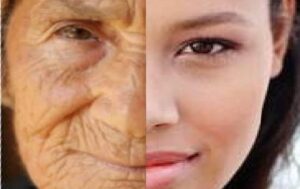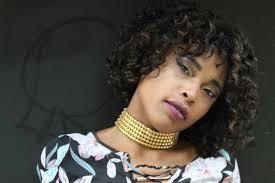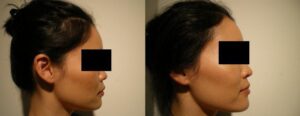30 Jan The Anti-Aging Effects of Botox and Dermal Fillers For a More Youthful Appearance

As we age, damage to our DNA causes wrinkles on our skin, making us look older. The medical term for wrinkles is rhytids.
While rhytids are a natural part of the aging process, patients have the power to reverse the aesthetic toll that aging takes with two types of procedures: dermal fillers and Botox.
Let/s briefly explore Botox and dermal fillers, how they work in unique ways, and their respective benefits.
What Is Botox and How Does It Work?
Botox is shorthand for Botulinum toxin type A. As a muscle relaxer, it’s existed as a powerful medical treatment for migraines, muscle weakness and other health conditions for decades.
Botox also treats dynamic wrinkles, a category of wrinkles caused by contraction of the facial muscles. Because Botox has muscle relaxant properties, the medication reduces muscle contraction in the face and, therefore, reduces the occurrence and prevalence of wrinkles.
Longstanding consensus indicates Botox is an ideal treatment for dynamic wrinkles, producing a “more youthful facial appearance”:
“Dynamic wrinkles (caused by hyperfunctional muscles) in the perioral, glabellar, and forehead regions can cause a patient’s expressions to be misinterpreted as angry, anxious, fearful, or fatigued. An emerging treatment option to address these issues is… botulinum toxin A (Botox) to decrease the appearance of the wrinkles, which yields a more esthetic and youthful facial appearance.”
Botox can smooth out and prevent the further development of wrinkles in the following areas:
- forehead wrinkles
- wrinkles around corners of eyes (crows’ feet)
- wrinkles between eyes (glabellar region)
- chin wrinkles

Data shows that Botox therapy is safe, efficacious, and extremely common. Botox works on every skin type, including those with darker complexions like African-Americans.
What Are Dermal Fillers and How Do They Work?
Collagen is a naturally-occurring protein critical for skin health. It performs a variety of functions, including keeping skin supple and youthful.
Collagen is the face’s natural padding under the skin. Over time, collagen decreases, volume decreases, and the face loses its “padded” look.
Dermal fillers recapture the “fullness” of youthful skin with an injection.

Dermal fillers come in multiple forms, including:
- calcium hydroxylapatite (Radiesse)
- hyaluronic acid
- collagen
- poly-L-lactic acid (Sculptra)
- polymethylmethacrylate beads
What Are the Similarities and Differences Between Dermal Fillers and Botox?
Both Botox and dermal fillers foster younger-looking, sleeker, healthier skin. However, there are important differences between them. Let’s survey their similarities and differences:
- Both are injected.
- Both are long-lasting aesthetic solutions.
- Both are minimally invasive.
- Both are approved by the U.S. Food and Drug Administration.
- Dermal fillers typically treat smile lines. They can also plump up the cheeks and lips. Botox usually is used to treat dynamic wrinkles around the mouth and eyes and between the eyebrows. Dermal fillers, not Botox, are the ideal solution for lines caused by diminished collagen.
- The benefits of dermal fillers last slightly longer.
- The risk of side effects from dermal fillers is slightly greater than Botox (although severe side effects from dermal fillers or Botox are rare).
An expert skin care professional can help determine which option better suits your needs and goals.
Contact Dr. Moma to Learn More About Dermal Fillers and Botox
To learn more about the transformative aesthetic benefits of dermal fillers and Botox, contact Dr. Sylvienash Moma, DNP.
To get an idea of the high quality of care Dr. Moma provides to her patients in her Colorado Springs clinic, head over to our patients’ testimonials page.

No Comments